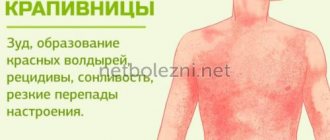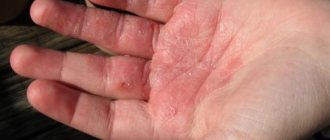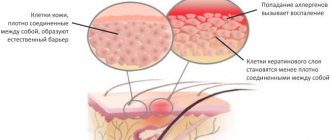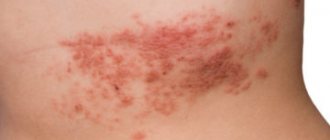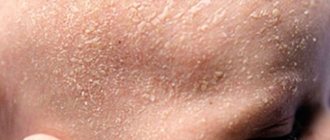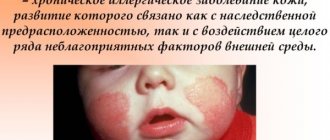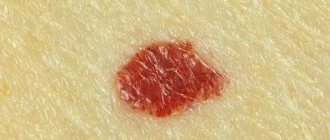Blog about traditional medicine. here you will find useful tips, folk remedies
and methods of treating your ailments. We hope that our recipes will help you!
Vasculitis - treatment with folk remedies
16 Sep 2010, Author: perec
Until recently, the opinion of doctors was unequivocal: it was believed that the occurrence of vein disease is explained by the fact that there are a lot of them on the legs. However, this point of view is already outdated; according to today's scientific research, in diseases of the veins it is necessary to take into account the condition of the walls of blood vessels, and above all the inner wall of the vessel, the so-called endothelium. It controls the exchange of substances between venous blood and adjacent biological tissue. Under the influence of poisons, infections and disorders of the immune system, the endothelium becomes inflamed and its controlling function declines. For this reason, the metabolism is out of balance, water from the venous blood is squeezed out into nearby tissues, the blood stagnates, and its fluid properties deteriorate.
Symptoms of vasculitis
- Swelling of the legs, often with pain along the veins; redness and hyperthermia of the skin around the superficial veins.
- Muscle spasms, increased fatigue, burning sensation in the legs, especially after prolonged exertion (for example, after standing for a long time), itching or eczema above the knees.
- Often changes in skin color, primarily on the inside of the lower leg above the ankles.
- Complications - abscesses, ulcers, ulcers.
Prevention of vasculitis
If, due to your profession, you have to be on your feet for a long time, do not forget that you need to constantly take care of unloading them.
- Rock your feet (standing on your toes, quickly raise and lower your feet).
- Standing on one leg, lift the other, trying to touch your heel to your buttock and remain in this position for several seconds.
- During your lunch break, place your feet higher, such as on a table. Or lie on your back and place your feet on the wall (at about a 90° angle).
- Walk a lot, walk, run, ride a bike, swim.
- Try to maintain a normal weight.
- Avoid prolonged overheating, for example, do not sit close to the radiator, do not use an electric heating pad in bed.
- No cigarettes! Nicotine impairs blood flow.
- Avoid wearing tight, uncomfortable clothing that restricts circulation, such as tight bras, stockings, and tight socks.
- Make gravity work for you! Position your bed so that your feet are a few inches higher. Blood will flow back more easily. Of course, if you snore or have heart problems, you will have to give it up.
Therapeutic stockings bring relief and promote free flow of blood. In severe cases (for example, inflammation), a support bandage can be worn. Let the nurse show you how to do it correctly.
People with problem veins should not travel to warm regions (for example, to the sea in summer). There is no need to sunbathe while lying on the beach. Take air baths in the shade or, as a last resort, cover your feet with a wet towel. The sauna is generally contraindicated for you.
Treatment of vasculitis with folk remedies
- Sophora Japonica . It contains the biologically active substance oxerutin. Its effect on sore legs is legendary.
- Healing calendula . Studies have shown that calendula ointment relieves the feeling of heaviness in the legs in 75% of patients with varicose veins and inflammation of the veins and relieves inflammation in 87% of patients. Calendula is one of the most effective medicinal plants for vascular inflammation. It not only helps in cases of acute inflammation, but also improves blood flow and heals wounds. All biologically active substances can be extracted from this extraordinary plant. They are extracted using carbon dioxide, and the extract itself is mixed with pork fat (for optimal effects on skin tissue). You can buy calendula preparations at the pharmacy (for example, ointment). Rub this ointment several times a day into sore areas, and apply a bandage with ointment at night.
How to treat vasculitis
At one time I worked as an assistant at the Department of Skin and Venereal Diseases of the Belarusian Medical University. One day I was called for a consultation with a young woman in labor in one of the maternity wards in Minsk.
During a conversation with the woman, it turned out that on the third day after giving birth, compactions along the vessels, redness and burning appeared in her groin area - signs of vasculitis.
Two days later, the vessels partially opened, resulting in the formation of an ulcer. The patient's temperature rose to 40 degrees. Various antibiotics and hormonal drugs did not lead to the desired result. I had to reconsider the treatment regimen with the mandatory inclusion of herbal medicines. Only a month and a half later the woman was able to return home.
Vasculitis is a group of allergic inflammatory changes in the vascular system of the skin, mucous membranes (mainly small blood vessels), resulting from hypothermia, exposure to various medications, infections and occupational factors. The most common are hemorrhagic vasculitis and erythema nodosum.
Treatment of hemorrhagic vasculitis
Hemorrhagic vasculitis is a vascular disease that simultaneously affects the skin and internal organs. Young people get sick, most often in their 20s and 30s.
Inflammatory redness appears on the skin, subsequently acquiring a brown color.
Redness occurs suddenly, even in good general condition. Blistering rashes with severe itching may also appear.
The skin is usually affected in the folds of the legs, less often on the forearms, face, and ears. For moderate vasculitis, the following collection helps: four parts each of knotweed herb, sophora fruit, nettle leaves, black elderberry flowers and three parts of yarrow herb 1 tsp. collection pour 1 tbsp. boiling water Drink 1/4 tbsp. four times a day.
Treatment of allergic vasculitis
Erythema nodosum is a deep allergic vasculitis that occurs against the background of infectious diseases with intolerance to certain medications (tincture of iodine, bromides, gold salts, oral contraceptives, salicylates). Dense inflammatory nodes ranging in size from a pea to a pigeon's egg with a bright pink and then bluish color appear on the surface of the legs. There is pain when pressed, the temperature rises, pain in the joints and muscles occurs, weakness, and headache are noted.
The disease is characterized by seasonality - exacerbations occur in autumn or spring. Exudative erythema multiforme also refers to vasculitis. It appears as dark red rashes the size of a pea on the crook of the forearms. Their center is bluish in color, sinks or turns into a bubble.
The most severe forms of this type of disease with damage to the mucous membranes occur after taking barbiturates and sulfonamides (Panadol, aspirin-UPSA, amidopyrine, etc.), as well as antibiotics, diphenin, iodides, phenolphthalein, streptomycin, penicillin, etc.
? For erythema, it is useful to make compresses from burdock leaves in the morning and cabbage in the evening.
? Compresses made from a decoction of the roots of Potentilla erecta also work well: three to seven days every 30-60 minutes (1 tablespoon of raw material per 1 tablespoon of water, boil for 30 minutes, strain).
? 20 g of aerial parts and 5 g of cinquefoil rhizomes pour 800 ml of water. Boil for 15 minutes, leave for an hour, strain. Drink 50 ml three times a day 30 minutes before meals with 1 tsp. jam or honey. Apply phytoapplications with a decoction of cinquefoil to the affected areas three to six times a day.
? 2 tbsp. dry agrimony herb pour 2 tbsp. water, simmer over low heat for five minutes, strain. Drink 50 ml three times a day before meals. At night, with this infusion, make microenemas with a volume of 60 ml every other day. There are four to seven procedures per course.
Author: Vladimir KORSUN, herbalist, Moscow.
Herbs for allergies - a proven and proven recipe.
Therapy
In about half of patients, skin inflammation is associated with infection, inflammatory disease, or malignancy. In such cases, treatment of the underlying pathology is prescribed. For viral hepatitis B and C, antiviral drugs are prescribed.
Treatment of cutaneous vasculitis includes the following general measures:
- rest and warmth for the affected limb;
- elevated position;
- eliminating friction on clothing and other mechanical influences.
For limited skin lesions, colchicine is prescribed. If it is ineffective, immunosuppressants and pulse therapy with glucocorticoids are used. In severe cases, methotrexate, azathioprine, and cyclosporine are used.
If such treatment is ineffective or contraindicated, intravenous immunoglobulins and plasmapheresis are used.
- Among external agents for the treatment of cutaneous vasculitis, the use of Solcoseryl ointment is indicated. This drug helps restore normal epithelium and strengthen the capillary wall. The ointment is used for dry lesions, and the gel can be used to heal trophic ulcers, applying a thin layer to the affected area twice a day until complete healing.
- Sinaflan helps relieve inflammation and swelling of the vascular wall, and prevents its necrosis. The ointment is applied to the affected areas 1-2 times a day.
- Compresses with Dimexide are also useful external remedies. This solution is mixed with water in equal parts, the lotion is kept for 15 minutes 1-2 times a day. Dimexide has an anti-inflammatory, disinfectant, and wound-healing effect.
- In the future, the use of products with panthenol, which relieves the residual inflammatory reaction and protects the skin, is indicated.
Any medications must be prescribed by a doctor. This is a serious disease, and if not treated correctly, it affects the internal organs, leading to irreversible changes in their function.
Traditional medicine recipes can only be used as an addition to the main treatment after consultation with a dermatologist and rheumatologist. The following means can be used:
- ingestion of an infusion of a mixture of mint, horsetail and yarrow with the addition of poplar buds, calendula and elderberry flowers; raw materials are taken in equal parts, infused like tea, and drunk a tablespoon 5-6 times a day;
- If you prepare a decoction from the same plants and leave it for 12 hours, it is good to make compresses with the resulting liquid for 20 minutes 1-2 times a day.
The main manifestations of vasculitis of various forms and types
Content
Vasculitis is a disease characterized by inflammatory damage to blood vessels that are destroyed or narrowed for a number of reasons, and subsequently pathological changes occur in other systems of the body. The commonality of symptoms of vasculitis for most patients is pronounced; the disease is characterized by:
- fever, with fluctuations in body temperature. This indicates that with the next increase, new skin vessels are involved in the pathological process;
- fatigue, pale skin, feeling of constant weakness, decreased appetite (loss) and weight loss;
- a rash appears on the skin with areas of hemorrhage, and, gradually, joints, nerves and muscles are involved in the pathology.
With vasculitis, not only internal organs, but also joints can be affected
Changes in internal organs depend on which vessels are affected by pathology. When the vessels of the kidneys are damaged, renal infarction and nephritis appear. Joint changes are characterized by the presence of pain in various joints. This is not due to previous injuries or the influence of other external factors. In some cases, there are symptoms of chronic arthritis, which lasts a long time, but without joint deformation.
Signs of vasculitis can appear in conjunction with arthritis, which is characterized by the appearance of general symptoms that generally indicate an inflammatory process in the joints. Arthritis symptoms last more than a month, and only after this time do signs of vasculitis itself appear.
If nerves are involved in the pathological process, the patient may experience a disturbance in the normal sensitivity of the affected area. This manifests itself in signs of hypersensitivity, or, conversely, in a complete loss of sensation. Symptoms of damage to the coronary vessels indicate disruption of the heart, deficiency of its nutrition, and there is a risk of heart attacks and strokes.
In general, vasculitis of any type will differ in duration, labor-intensive therapy, and regular exacerbations. The prognosis for the disease can be established only when the degree of damage to blood vessels and internal organs is known.
Group SV
The symptoms of systemic vasculitis are very extensive and are characterized by the presence of general signs and individual changes, for each of them there are characteristic photos:
- Takayasu arteritis
With this form of primary systemic vasculitis, large arteries are affected, including the aorta, usually found in young women who complain of numbness in the legs and arms and a feeling of constant coldness. Characteristic symptoms: low pulse filling, even its absence, frequent headaches, high blood pressure and blurred vision;
- Behçet's disease
It occurs in young men (20-30 years old) and is characterized by inflammation of the veins and arteries, the formation of ulcers in the mouth, on the genitals, inflammation of the eyes and skin lesions;
- Buerger's disease (thromboangiitis obliterans)
The problem is associated with smoking and manifests itself in men 40-50 years old in the form of inflammation and the formation of small blood clots in the legs. Pain appears in the arms and legs, and as a result of poor blood supply, ulcers can form on the fingers;
- giant cell arteritis
It is found in people who have celebrated their half-century anniversary. Vasculitis is characterized by inflammation of the arteries in the temporal region of the head, often occurring together with polymyalgia rheumatica (pain, stiffness in large joints). Changes in the blood vessels cause severe headaches, soreness in the muscles of the head and neck, tension, numbness of the tongue, and pain when chewing in the lower jaw. In the photo, the pathology is visible in the visual enlargement of the vessels at the temples;
- Wegner's granulomatosis (granulomatous polyangiitis)
The reasons for the appearance of signs of this type of vasculitis lie in the pathology of blood vessels in the nose, lungs and kidneys. The most common symptoms are sinusitis, which can cause bleeding, difficulty breathing through the nose, and polyps;
- cryoglobulinemic vasculitis
Characterized by the appearance of a rash (purpura) on the legs, a feeling of numbness and inflammation of the joints, it is associated with neuropathy (damage to nerve endings). There is a connection with carriage of hepatitis C;
- microscopic polyangiitis
Symptoms of this systemic disease manifest themselves in damage to the small vessels of the kidneys, skin, lungs and nerve endings. In addition to general manifestations, skin ulcers and glomerulonephritis may form;
- Henoch-Schönlein purpura
It appears in children, but can occur at any age. Signs of hemorrhagic vasculitis are manifested by inflammation of blood vessels, joints, kidneys and intestines. The test reveals blood in the urine. Purpura appears on the lower extremities (including the buttocks), which is clearly visible in the photo, the patient complains of pain in the joints and abdomen;
- Churg-Strauss syndrome (angiitis, allergic granulomatosis)
The manifestation of the allergic type of vasculitis is expressed in damage to the blood vessels of the lungs, bronchial asthma is often detected;
- polyarteritis nodosa
In various parts of the body (skin, heart, peripheral vessels, intestines and muscles), medium-sized vessels are affected. Symptoms are expressed in the appearance of a special rash (purpura), ulcers, pain in the joints, muscles, and abdomen.
- cerebral
Signs of cerebral vasculitis do not always indicate this particular disease. Since the algorithm and mechanism of brain damage in vascular diseases are approximately the same. This is a severe (rare) systemic disease with long-term consequences, most often occurring as a secondary disease. In case of skin rashes, it is important to pay attention to neurological functions - the phenomenon of parasthesia (goosebumps), lethargy, tearfulness in children, irritability, depression and apathy. The disease is caused by the presence of microbleeds in the brain due to thrombosis and edema;
The symptoms of urticarial vasculitis simulate the clinical picture of recurrent urticaria. Vasculitis is characterized by the appearance of nodules and blisters of varying sizes in different areas of the skin. The rashes, if you look at the photo, have clear contours, a dense structure and last more than a day. After a breakthrough, a hemorrhagic rash appears in their place. After performing diascopy (bleeding) of a skin area by pressing on it with a glass slide, the blisters turn pale, while the rash that appears in their place does not change its color. Changes also occur in internal organs.
Group of syndromes
With vasculitis, symptoms are usually divided into several categories, which are divided into syndromes and differentiated as follows:
- cutaneous form;
- pulmonary form;
- brain (cerebral);
- renal form;
- mixed form;
- articular form.
Skin manifestations
Cutaneous vasculitis in childhood manifests itself as a rash of red spots
Vasculitis in childhood almost always appears on the skin in the form of hemorrhages or foci of necrosis. The papules are a little itchy, the spots tend to merge and form wide bruises on the skin. The reasons are thrombosis at the level of capillaries and arterioles, platelet depletion and the resulting fragility of blood vessels, which is why vasculitis of this form manifests itself after compression and pinching.
Often cutaneous vasculitis appears in the folds of the skin, since flexion-extension provokes injury to the skin and damage to blood vessels. In this form, symptoms that are not noticeable externally can appear on the internal organs.
Articular shape
In this case, vasculitis is characterized by damage to the vessels that feed the epiphyses of the bones, which ultimately leads to inflammation of the cartilage tissue and the appearance of pain, swelling and limited mobility. Rheumatoid vasculitis gives similar symptoms; it is characterized by volatility of changes in the joints. This means that signs that appear in some joints then spread to others.
Cardiac and pulmonary forms
With pulmonary vasculitis, symptoms of respiratory failure appear, bloody sputum appears (vascular pneumonia), and stenosing laryngotracheitis. Damage to the heart is characterized by a change in its rhythm; both an increase in the frequency of heart contractions and a decrease can be observed, which is associated with the multiplicity of mechanisms of organ damage. During auscultation, it is necessary to pay attention to systolic murmurs, which indicates rheumatic valve damage. With vasculitis, this pathology is almost always diagnosed together with acute rheumatic fever, which cannot be overlooked under the guise of rheumatoid vasculitis.
Kidney form
The renal form of vasculitis is directly related to infectious lesions of the body
This form of infectious vasculitis is caused by a bacterial or viral infection. It is accompanied by an immune reaction and occurs with the formation of many specific antibodies that circulate in the blood for a long time and affect blood vessels. As a result, the nephrons in the kidneys become inflamed, and the following symptoms appear in the laboratory:
- protein in the urine, the appearance of casts and glucose;
- hyperuricemia;
- hypercholesterolemia.
Mixed vasculitis
It is important to recognize any symptoms at the initial stage of the disease; this is what will give the benefit of therapy and will not allow vasculitis to cause serious changes in the body.
Similar articles:
Restoration of internal organs according to the Norbekov system
Diagnostics
The earlier the examination is carried out, the diagnosis is established and treatment is started, the greater the chances of avoiding damage to vital organs and disruption of their functions.
If necessary, consultations with a vascular surgeon, therapist, ophthalmologist, neurologist, otolaryngologist, etc. are scheduled.
Recognition of the disease occurs in several stages
Confirmation of skin vasculitis
If the skin is involved in the pathological process, it is necessary to perform a skin biopsy in the affected areas that arose 12-24 hours before the study. This helps to detect neutrophilic infiltration of blood vessels and make a diagnosis.
If medium-sized arteries are suspected, a deeper (wedge) skin biopsy may be needed. Samples from nodules can be taken and usually provide more information than samples from the edges of a skin ulcer or livedo reticularis.
Diagnosis of systemic diseases
After confirming the diagnosis of skin inflammation, the doctor must determine its severity and damage to other organs. External examination reveals signs of damage to internal organs, for example:
- nasal congestion;
- hemoptysis;
- dyspnea;
- blood in the urine;
- abdominal pain;
- impaired sensitivity of the limbs;
- fever;
- weight loss;
- increased blood pressure.
If involvement of internal organs is suspected or if symptoms of the pathology persist for more than 6 weeks, additional studies are prescribed:
- detailed blood test;
- biochemical analysis with determination of urea levels, residual nitrogen, creatinine, liver tests;
- diagnosis of HIV infection, hepatitis B and C;
- determination of the level of complement, rheumatoid factor, antinuclear antibodies;
- electrophoresis of serum and urine proteins.
In case of severe damage to the lungs or kidneys, the following studies are prescribed:
- antineutrophil cytoplasmic antibodies (ANCA);
- X-ray of the lungs and paranasal sinuses.
If polyarteritis nodosa is suspected, angiography is performed to evaluate microaneurysms of the vessels of the internal organs.
With an in-depth study, other causes of pathology may become apparent, such as the effect of drugs, infectious agents, or the presence of a malignant tumor. A lung or kidney biopsy is often necessary to confirm the diagnosis.
Related articles: Pigmented purpura
Recovery
After the child has completed a clear course of treatment for hemorrhagic vasculitis, he and his parents begin an equally important rehabilitation period. At this time, all efforts are aimed at preventing relapse of the disease. Therefore, parents should provide their child with the following:
- Follow the recommended diet for a year after discharge from the hospital;
- If there are chronic infectious foci, they must be treated;
- Do not allow your baby to become hypothermic;
- It is important to try to protect your child from viral infections as much as possible;
- Sunbathing is not allowed.
In most cases, hemorrhagic vasculitis in children is diagnosed in an acute form. In 75% of patients, after one and a half months of treatment, the symptoms of vasculitis completely disappear. The remaining patients experienced kidney damage, as well as transformation of vasculitis into a chronic form.
If the child was in serious condition, and hemorrhagic vasculitis rapidly progressed, and first aid was not provided in a timely manner, then the prognosis is less favorable due to the development of renal failure. Cases of death are very rare, but they have been recorded with peritonitis (stomach or intestinal hemorrhage).
In the conditions of modern medicine, new generation drugs and high-tech equipment, children with hemorrhagic vasculitis have every chance of a full recovery in the shortest possible time. It is important that parents, when identifying the first symptoms, immediately call an ambulance or go to the pediatrician.
Diet
Diet for hemorrhagic vasculitis in children is of particular importance. During the recovery process, it is necessary to completely limit the consumption of the most allergenic foods, including: citrus fruits and juices, chicken eggs, canned food, chocolate, honey, red fruits and vegetables.
Also, you should not give your baby any foods that contain at least a little artificial coloring, animal protein, or histamine. With strict adherence to dietary recommendations and drug therapy. You can count on the fastest and highest effect.
Which organs are most often affected?
Most often, signs of the disease appear in the following areas of the body:
- inner part of lips;
- inner cheeks;
- soft palate (in this area of the disease it is manifested by a slight internal hemorrhage, you can see spots of red or dark burgundy color).
Minor bleeding may occur at each of the above areas. This problem belongs to the class of pathologies of the immune system. And the number of patients complaining of hemorrhagic vasculitis usually includes representatives of the stronger sex. But representatives of the fair sex also succumb to this disease, but very rarely.
Systemic nature
This type of pathology occurs against the background of disorders of immune mechanisms in various systemic diseases, which are characterized by damage to connective tissues (rheumatism, granulomatosis, lupus erythematosus, etc.). In this case, the disease has the following symptoms:
- Destructive changes in the walls of blood vessels in the respiratory system.
- Ulcerated granulomas on the mucous membranes of the mouth, nose and bronchi.
- The appearance of glomerulonephritis.
- The occurrence of severe complications on internal organs, skin, visual organs and the nervous system.
With rheumatism, the pathology spreads to the entire body and manifests itself depending on the stage of the disease. In addition to the skin, the vascular system of internal organs and the brain is affected, with the subsequent risk of bleeding.
Causes
The specific causes of hemorrhagic vasculitis in children and adults remain completely unknown to this day. Doctors only point out that pathology can occur during a long course of diseases of an infectious or viral nature, including:
- acute respiratory viral disease;
- flu;
- chicken pox;
- measles;
- rubella;
- scarlet fever;
- angina.
From the moment a pathogenic pathogen enters the body until the first symptoms appear, it can take from 7 days to three weeks. However, the countdown must begin after the underlying disease has been eliminated.
The photograph below clearly projects what the disease looks like on children’s legs.
Hemorrhagic vasculitis
Among the provoking agents for the development of vasculitis, experts note:
- Prolonged exposure to the cold and sudden changes in temperature;
- Ever been injured;
- Taking medications to which the body has an allergic reaction;
- A history of food or other allergies;
- Routine vaccination of children.
Also worth mentioning separately is helminth damage. When parasites penetrate the body, severe intoxication occurs. Vasculitis can also appear with tuberculosis. Then the patient develops capillary-toxic protein complexes. However, in patients of a younger age group, the disease often develops against the background of allergies.
Treatment with home remedies
What else does the treatment of vasculitis in adults involve?
In folk medicine there are a lot of recipes that can help you cope with this disease:
- For example, a herbal infusion is perfect. The ingredients for its preparation are nettle along with knotweed, elderberry flowers, yarrow grass, Japanese sophora berries and water. All components are added in the amount of four spoons. During cooking, the dry ingredients are crushed and mixed thoroughly. One glass of the resulting mixture is poured with boiling water and left for an hour. Next, the liquid is filtered. The resulting infusion should be consumed twice a day as directed.
- An infusion of lingonberries, violets and string will also work. The ingredients are as follows: string, violet, water and lingonberries. All components are added in the amount of three spoons. The dry mixture is crushed and mixed. After this, two spoons are poured with water. The product is infused in a dark place for at least an hour, then filtered. It must be drunk four times, half a tablespoon.
- Another effective folk remedy for vasculitis on the legs is an ointment whose components include one glass of birch buds and half a kilogram of nutria fat. The kidneys are ground into powder. In the event that they are fresh, then they become mush. The mass is added to nutria fat. The mixture is then transferred to a clay pot. Every day for a week, the medicine is placed in the oven at minimum temperature for three hours. After this, it is poured into tightly sealed jars. Store the drug in a dark place that should be cool. The product is applied to the skin once a day just before bedtime. It should be used until complete recovery.
Urticarial type
In another way, it is also called angiitis, which is one of the allergic pathologies characterized by chronic inflammation of the superficial vessels of the skin. At the initial stage of development, the disease is often diagnosed as chronic urticaria. The disease is characterized by the following symptoms:
- An undulating course along with the appearance of hemorrhagic nodes, spots, and blisters on the skin.
- A burning sensation in the affected area.
- The appearance of headaches, discomfort in joints, muscles, lower back and abdomen.
- Fever and glomerulonephritis.
The disease is diagnosed by immunofluorescence and by histological examination of the affected area of the dermis.
Drug treatment
This type of fight against the disease involves the use of drugs whose action is aimed at suppressing the inflammatory process inside the blood vessels. Medicines should completely eliminate any pathological symptoms.
For treatment, a group of drugs is usually prescribed that consists of anti-inflammatory drugs, such as Indomethacin, Cyclophosphamide, and the glucocorticosteroid Prednisolone. In addition, to strengthen blood vessels, you need to take Dicinon and Ascorutin. At the same time, the permeability of blood vessels is minimized thanks to Prodectin, which also prevents the formation of blood clots.
In the case of nodular erythematous form, an additional antiallergic agent is used. It could be “Suprastin” or “Telfast”. Immunosuppressants are often prescribed in combination with vasodilators and coagulants to improve effectiveness.
Kawasaki syndrome
This systemic form of autoimmune vasculitis is diagnosed most often in children under seven years of age and is characterized by damage to the vessels of the lymph nodes, heart and mucous membrane of the respiratory system. The clinical picture is characterized by an acute rapid onset with a temperature of thirty-eight to forty-one degrees and the following symptoms (in order of gradual appearance):
- The occurrence of debilitating fever.
- Damage to the skin with a scarlet-like rash with the presence of erythematous plaques.
- Damage to the mucous membranes of the respiratory system, nose, and eyes.
- The appearance of thickening and redness of the skin on the palms.
- Enlarged lymph nodes in the neck and the presence of a crimson tongue.
- The presence of peeling skin around the nails, and, in addition, on the phalanges of the fingers.
- Damage to the cardiac and vascular systems in the acute phase, aneurysms.
Doctors can cure this condition if it is diagnosed in a timely manner, and its consequences are usually eliminated after five to eight years.

